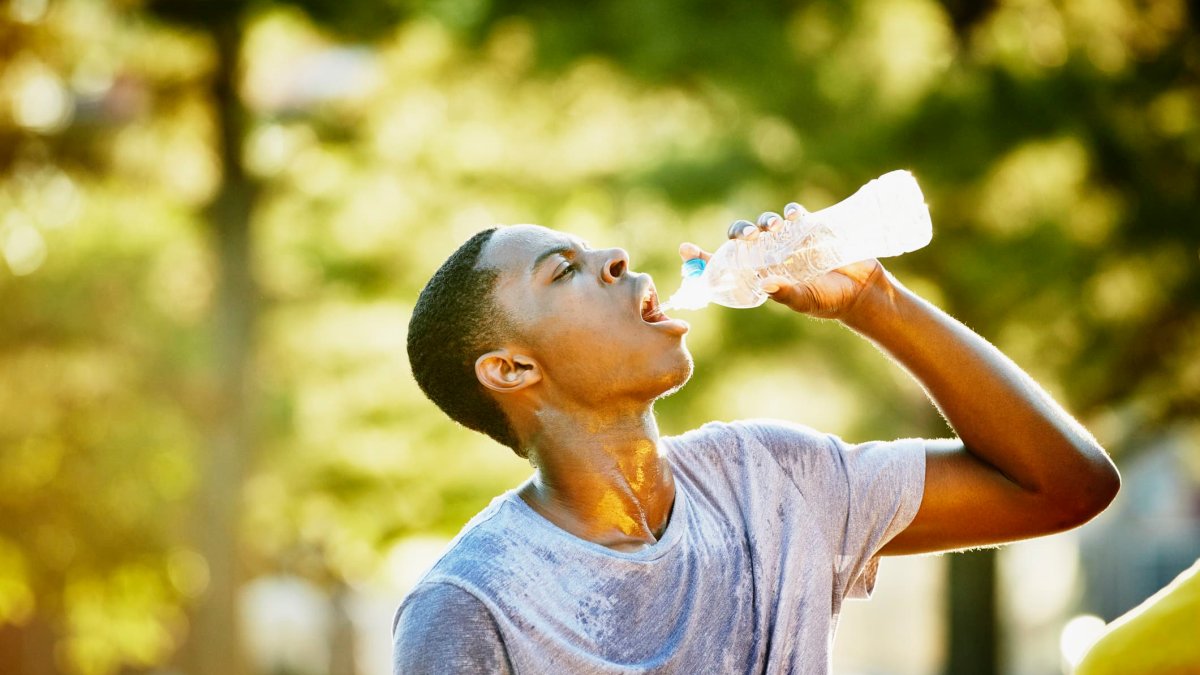Shaam Nobel and his dad Gary enjoyed rock climbing at Mission Trails Regional Park on a sunny San Diego morning. Knowing the dangers of the heat, they packed plenty of water, got an early start and tried to stay in the shade.
“Yeah, the sun had just started to hit us when we packed out. But, I’ve got a Nalgene, so one liter of water,” Shaam Nobel said.
Other hikers and bikers NBC 7 spoke with the same day said they’re aware of the serious risks of heat-related illness as well.
One woman said, “Overheating happens a lot, mostly with the elderly over here.”
In July, a San Diego Fire-Rescue Department helicopter had to rescue three people from Mission Trails Regional Park. They were suffering from dehydration.
And in June, one hiker died and another was taken to the hospital in critical condition after being rescued from Palm Canyon Trail in Borrego Springs. It was so hot that day, about 115 degrees, that a firefighter collapsed.
We’ve seen record-breaking temperatures throughout San Diego and California this summer. June 2021 was the hottest June on record for the entire United States.
The importance of being prepared during intense heat is highlighted in a new CDC report.
Researchers found there were more than 3,500 heat-related emergency room visits in Northwestern states that had record-breaking heat in May and June. A single day – June 28 – saw 1,000 visits of those visits. The report found men 75 and older were the most common patients.
William Bianchi, M.D. of Sharp Coronado said they’re seeing the increase in heat-related ER visits in San Diego, too.
“Those first few symptoms, although benign, could represent something more dangerous and deadly,” said Dr. Bianchi. “And that’s when it’s time to come and see us in the emergency department.”
NBC 7 Investigates found hospitals throughout San Diego County are reporting an increase in heat-related ER visits.
UC San Diego Health treated 2,129 people for heat-related illnesses this June compared to 1,886 in June 2020, according to a spokesperson.
Kaiser Permanente’s chief of emergency medicine in San Diego said they treated twice as many heat-related illnesses during July 2021 compared to July 2020.
The real impact is likely even worse, according to the CDC. The data they gathered is limited to emergency departments and doesn’t account for people who may have gotten help from other medical facilities.
And environmentalists warn that these types of illnesses will likely keep happening as climate change drives temperatures up around the nation.
Dr. Bianchi said that means people need to be more aware of heat-related symptoms. Signs of heatstroke include dizziness, nausea, and fainting. But if you feel a fast, strong pulse, hot and red skin, or confusion, those can all be warning signs as well.
“If the temperature is going to be higher it’s certainly a little bit more dangerous to be out there, so I just recommend that everyone at home keep a really close eye on how long they spend out in higher temperatures, stay hydrated and stay safe,” Dr. Bianchi said.

